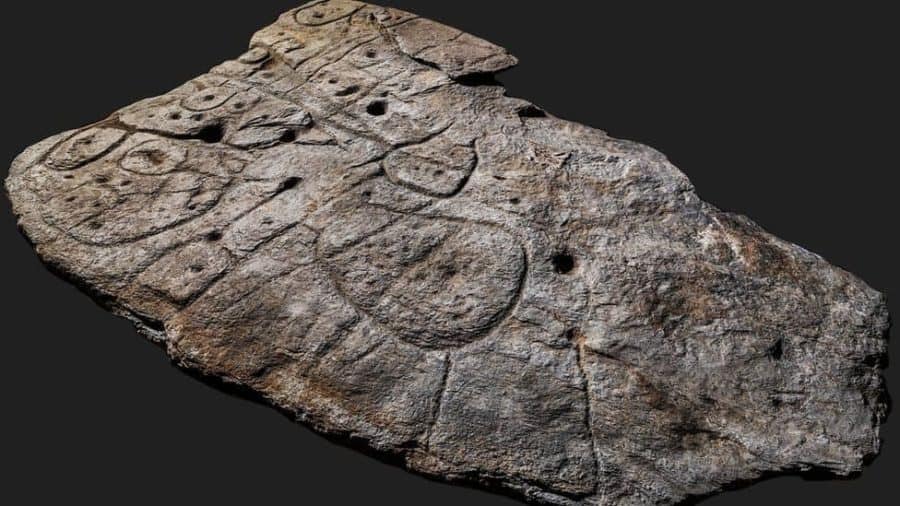Embalmed in earth,
your chiselled contours
lay dormant
in another’s chamber;
rivulets in rock
congealed
with dampened soil
until we break you
free
and into pieces.
Running wrinkled fingers
along weathered channels
we scry for secrets
between your boundaries;
trading burials
as we lay you to rest
beneath the edges
of your distant kingdom.
Wordlessly you call to us,
triumphant topographies
proclaiming all
that you once were;
proud motifs mark
a face now lost
amongst a landscape
you no longer are.

This poem is inspired by recent research, which has found that a 4,000-year-old carved stone slab is Europe’s oldest known map.
The ‘Saint-Bélec Slab’, is a 2m by 1.5m stone slab that was first discovered in 1900 by Paul du Châtellier, a local archaeologist, during an excavation of prehistoric burial ground in Finistère, western Brittany, France. After its discovery it was stored for over a century in a niche beneath the moat of du Chatellier’s residence, the Château de Kernuz, and then later moved to a cellar on the property, where it was re-discovered by researchers who had read du Châtellier’s original reports and had come to the conclusion that the slab might represent an early map because of the intricate engravings that lined its surface.
After re-discovering the slab, the researchers in this study carried out high-resolution 3D surveys recording its surface and engravings. They found that the slab bears many of the elements expected in a prehistoric map, including repeated motifs joined by lines to give the layout of a map. The slab’s topography was also purposely 3D-shaped to represent the valley of the River Odet, whilst several lines appear to depict the river network. In addition to the rivers and hills, the slab also contains motifs that may represent the locations of settlements, barrow sites, and field systems. The central motif (which was interpreted by the researchers as a symbol of an enclosure) suggests that the centre of a territory might have existed within three river springs: the Odet, the Isole, and the Stêr Laër, perhaps an early Bronze Age territory, extending over an area of 545 to 843 km2. So why was the Saint-Bélec slab made? One possibility is that it was a way to affirm the ownership of the territory by a small prince or king at the time, making it the oldest map of a European territory that has ever been identified, and highlighting the map-making knowledge (and need) of these early civilisations.


